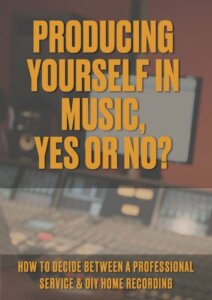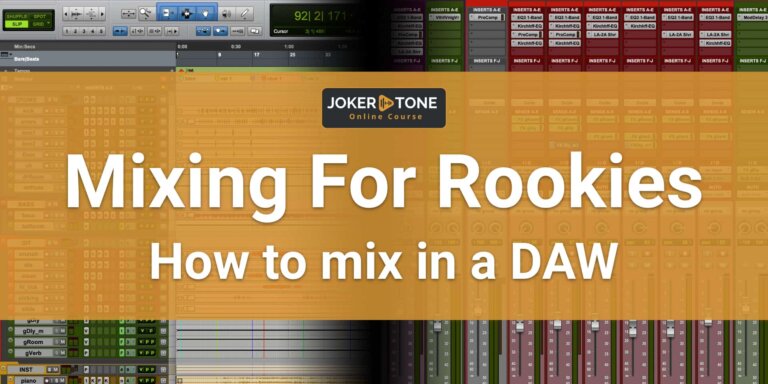In this episode, we dive deep into a topic that is essential for any self-producing music artist, especially those who are embarking on this exciting journey or who are in the early stages: The Three Roles of a Self-Producing Artist. By understanding and managing these three critical roles — Songwriter and Arranger, Performing Artist, and Analytical Audio Engineer — you’ll be able to boost your productivity and creativity while ensuring that each aspect of your music creation gets the attention it deserves.
Master Your Self-Production Journey: The Three Crucial Roles of a Self-Producing Artist
Below, I’ve outlined the key points discussed in the episode. Make sure to watch the full video for deeper insights and strategies that can transform your music production process.
Unpacking the Three Roles
1. The Songwriter and Arranger
Role Description: The Magic Begins Here
As a songwriter and arranger, your primary focus is on the creative elements of your music. This is where the magic starts. You’re involved in writing lyrics, composing melodies, arranging the song, and structuring it with verses, choruses, and bridges. This phase is a personal and emotional journey where you can express your memories, stories, and feelings.
Key Tips:
- Focus on Writing: Don’t think about recording or mixing during this phase. Immerse yourself in the creative process.
- Be Open to Experimentation: Break free from conventional rules and explore new styles and genres.
- Embrace Imperfection: Understand that not every song you write will be a masterpiece. This mindset allows you to explore and innovate without the pressure of perfection.
2. The Performing Artist
Role Description: Capturing the Soul of Your Music
Once your song is written, it’s time to step into the shoes of the performing artist. Your goal here is to bring your written thoughts and stories to life through your performance. This includes interpreting your own lyrics with emotion and experimenting with different recording techniques.
Key Tips:
- Performance with Emotion: Ensure you are in the right mood that aligns with the song’s emotion. If you’re happy but the song is sad, it’s better to wait until you’re in a more compatible state of mind.
- Live Performance Mindset: Treat your recording as if it were a live performance. Bring your best energy and emotions.
- Experiment with Techniques: Try different microphones, preamps, and recording setups to find the best sound for your performance.
3. The Analytical Audio Engineer
Role Description: Polishing the Gem
After recording your performance, the focus shifts to the technical aspects — editing the performance, balancing the mix, and mastering the final sound. This phase is more analytical and requires a different mindset.
Key Tips:
- Clean Up and Balance: Focus on cleaning up the performance (timing, pitch correction) and balancing all elements in the mix.
- Follow and Break Rules: While it’s crucial to adhere to some standard mixing and mastering rules, don’t be afraid to try new things one at a time.
- Fresh Perspective: Listen with fresh ears by taking breaks between different stages. This will help you make more objective decisions.
Managing the Three Roles Efficiently
Switching between these roles requires a strategic approach to ensure that each aspect is given proper attention without multitasking errors. Here are my top five tips for effectively managing these roles:
1. Do One Role at a Time
Avoid multitasking. Each role requires a distinct mindset, and switching too quickly can disrupt both creativity and efficiency. Focus entirely on one role before transitioning to the next.
2. Set Time Frames for Each Step
Allocate specific time frames for each role. For example:
- One week for writing and arranging.
- One weekend for recording (all instruments and vocals).
- One day for editing.
- Two days for mixing.
- One hour (or needed time) for mastering.
Sticking to these timelines prevents burnout and ensures every stage receives sufficient attention.
3. Review with Fresh Ears
Take breaks between each role to rest your ears and gain a fresh perspective. This practice helps you to approach the task with a fresh and more objective view, enhancing the quality of your production.
4. Stay Goal-Oriented
Maintain clear goals for each phase. During the writing process, focus on storytelling and melody. For performance, prioritize emotion and clarity. In the technical phase, concentrate on the overall mix rather than individual elements.
5. Take Notes and Adjust as You Go
Documenting your thoughts and ideas for each role can streamline transitions and adjustments. Write down any noteworthy ideas or changes required so you can easily refer back to them when you switch roles.
Conclusion
By understanding these roles and how to manage them, you can concentrate on the specific tasks at hand, ensuring that you bring your full potential to each stage of music production. This structured approach will not only enhance your workflow but also help you evolve as an artist, leading to higher-quality productions.
I hope you find these insights helpful. Dive into the full episode for a more comprehensive guide and to see these tips in action. Thank you for joining me today. Stay tuned for the next episode, and happy music-making!
Chapter Timestamps
- Conclusion 28:22
- Introduction- 00:10
- Role of the Songwriter and Arranger – 02:17
- Key Tips for Songwriting and Arranging – 03:36
- Role of the Performing Artist – 04:51
- Key Tips for Performing Artist – 07:18
- Role of the Analytical Audio Engineer – 10:21
- Five Tips to Manage the Three Roles – 15:46
- Conclusion 28:22



